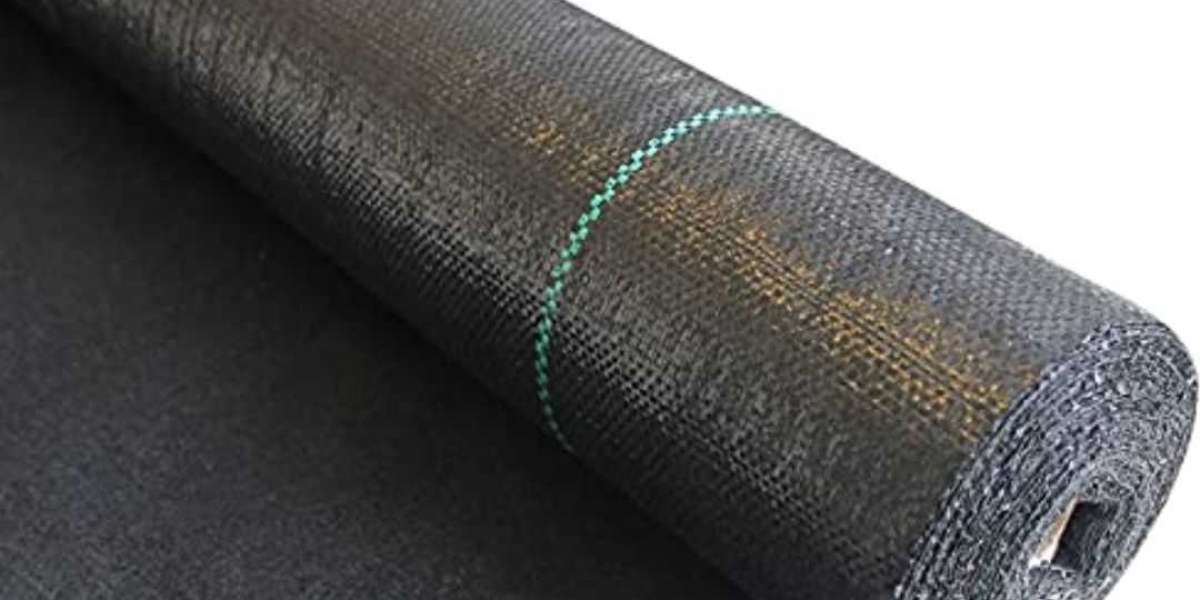A healthy lawn or landscape will require persevering against persistent weeds that compete with plants for nutrients, water and sunlight. Traditional methods of weeding, including pulling by hand or chemicals, can be laborious, expensive, and environmentally challenging. A very effective and environmentally conscious method of control that is increasingly available is weed barrier fabric. For both homeowners and landscapers, understanding the benefits and uses of weed barrier fabric, especially available in stores like Home Depot, can offer considerable improvements in the management of a garden. As you're improving your backyard or laying a new walking pathway, fabric weed barrier offers flexibility and long-term maintenance-free weed control.
The Advantages of Using Weed Barrier Fabric
The main advantage of Black fabric weed barrier is that it works! It prevents weeds from growing, decreasing the need for chemical weed killers or bending over and pulling weeds. The fabric creates a barrier that weeds have a hard time penetrating, and it is this barrier that stops weeds from sprouting through the soil. In addition to suppressing weeds, weed barrier fabric conserves soil moisture by decreasing evaporation. This means you'll likely have to water your plants less often. The fabric will also keep flower beds, vegetable gardens, or pathways looking tidy rather than messy, which will lend your landscape a polished and well-maintained appearance. Weed barrier fabric also helps prevent soil erosion on slopes and prevents weeds from emerging from mulched regions, so it is a valuable product for both home gardeners and professional landscapers.
Types of Landscape Fabric and Their Uses
There are different types of landscape fabric weed barrier, and each has specific applications. Woven fabric is tightly made from polypropylene or polyester and is durable and tough, making it suitable for a high-traffic zone, such as a walkway or driveway, or for heavily mulched beds. Non-woven fabric is made from bonding fibers together and tends to be softer and more permeable, making it terrific for garden beds and planting areas where root growth and water permeation is important. For heavy-duty applications, such as covering large areas or as a liner under gravel, use fabric weed barrier home depot sells, which offers heavy-duty fabric weed barrier options that are tough enough to resist weather and foot traffic without tearing.
Installing and Maintaining Weed Barrier Fabric
In order for you to get the most out of your Best way to lay weed barrier fabric, it is important to install it properly. First, clear the area of any existing weeds, rocks, or debris. Make sure that the seams are overlapped by at least 6 to 12 in. for extra weed earth, in case any weeds manage to sneak through the seams. Secure the fabric with landscape staples or pins, to avoid any shifting due to wind or watering. After successfully laying down your fabric, it can then be covered with your mulch, gravel, or decorative stone to aesthetically improve the area and limit future weed growth. It is good practice to check periodically, to make sure there are no rips or holes or if there are, patch them as soon as possible, while the area remains an active barrier space.
The Environmental Impact and Sustainability
Although there are many advantages to using a weed barrier fabric, many gardeners who are conscious of how using plastic materials can impact the planet may question the impact of fabric. Though many weed barrier fabrics are made from plastics polyester or polypropylene, there have been advancements in some biodegradable fabrics, which will degrade over time and reduce plastic waste. If you are worried about the fabric that you are buying, you can look for eco-friendly or sustainable fabric weed barrier home depot products or sustainable products made from organic plant materials. Layering organic mulches on top of the fabric weed barriers is another sustainable practice that will help with soil health. Another way to consciously lessen the environmental footprint of weed barrier fabrics is to dispose of or recycle them properly.
Conclusion: A Practical Investment for Beautiful Gardens
In closing, Woven fabric weed barrier is a great resource for anyone wanting a simple and effective way to suppress weeds and achieve a clean garden appearance. Given its functionality, adaptability, and ease of installation, it is a no-brainer that homeowners, landscapers, and professional groundskeepers utilize fabric weed barriers. Many local Home Depots and independent retailers are stocked with weed barrier fabrics that can easily meet the needs of their clientele—whether it be lightweight permeable fabrics for flowering plant beds or heavier-duty weed barriers for pathways. If installed and maintained correctly, weed barrier fabric will reduce weed presence in the garden space, reduce water usage, and promote plant health while ultimately saving time and effort. This technology easily leads to beautiful sustainable landscapes that thrive on minimal human intervention.
Frequently Asked Questions
1. Is weed barrier fabric safe for organic gardening?
Yes, many weed barrier fabrics are made from non-toxic, inert materials. For organic gardens, opt for biodegradable fabrics or natural options like burlap or jute, which decompose naturally and do not introduce chemicals into the soil.
2. How long does weed barrier fabric typically last?
Heavy-duty fabrics can last 5-10 years, while lighter fabrics may need replacement after 2-5 years, especially in areas with extreme weather.
3. Is it possible to cover existing weeds with weed barrier fabric?
It's best to remove existing weeds before installing the fabric to ensure maximum effectiveness. Covering active weeds without removal may lead to their growth through gaps or tears in the fabric.











